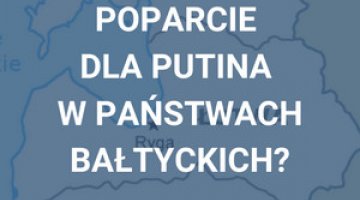Local elections in Lithuania: the conservatives lose popularity
A second round of local elections was held in Lithuania on 19 March, for mayors of cities and districts in 34 municipalities where no candidate received a minimum of 50% support in the 5 March vote (runoffs between the top two candidates). Back in the first round, 1498 councillors were elected in 60 city and district municipalities, as were 26 out of 60 mayors.
The second-round results consolidated the victory of the opposition Social Democratic Party (LSDP), which had already won the most votes nationwide (17.4%) in the first round of local council elections. At that time the Social Democrats won 10 mayoral posts, and they have now picked up another seven. In the Vilnius region, where representatives of the Electoral Action of Poles in Lithuania/the Union of Christian Families (EAPL-ZChR) had led the local government for almost 30 years, the deputy chairman of the Social Democrats, the ethnic Pole Robert Duchnevič, became mayor.
The Social Democrats’ political rival, the conservative Homeland Union/Lithuanian Christian Democrats (TS-LKD) party, which is currently in power along with two liberal groups, came close to the Social Democrats at 16.2% nationally, but they only succeeded in winning five mayoral races. The Conservative Party’s only success came when Valdas Benkunskas became mayor of Vilnius after the second-round runoff.
Third place (13.8%, 10 mayoral posts) was won by various political committees; these are individual groups of candidates vying for council seats or the mayoral office in a specific local government. The formation of these committees is subject to similar regulation as that of political parties. Fourth place went to the opposition Union of Peasants and Greens (LVŽS, 9.2%, 8 mayoral posts), an agrarian grouping that is mainly popular in Lithuania’s provinces. The Liberal Movement (LS), a member of the ruling coalition, won 6.9% support and 9 mayoral posts, but the Conservatives’ other coalition partner, the Freedom Party, failed to pass the 4% threshold set for local elections. The new party of former Prime Minister Saulius Skvernelis, the Union of Democrats ‘In the Name of Lithuania’, won 6.6% of the vote and 5 mayoral posts, which should be considered a good result for a grouping that is only just beginning to build up its structures. The EAPL-ZChR got 5.3% of the vote, but only one representative of this Polish grouping won a mayoralty. The liberal party Freedom and Justice received 5.2% support and 2 mayoral posts.
Turnout was the highest in 20 years, with 48.9% in the first round (compared to 47.8% in the previous elections in 2019) and 45.8% in the second round (up on 41.2% last time). Candidates were put forward by parties, coalitions and political committees; independent individuals also stood for the posts of mayor.
Commentary
- Both political parties and political committees competed in the local elections, so the results cannot be treated as a real survey of political opinion in the context of next year’s parliamentary elections. However, certain new trends have emerged: a gradual return of the Lithuanian public’s trust in their politicians, primarily those in the opposition. In previous local elections, social electoral committees were the main winners (receiving 26.7% of the vote), while in this year’s elections, political committees were the main winners.
- This year, voter interest has clustered around the two so-called traditional parties of the left and right, which have been competing for many years. The victory of the Social Democrats at both the local council level and the mayoralties (of which they won two more than in 2019), together with the second place the currently ruling Conservatives won in the elections to local councils (with weak results in the votes for mayors, losing six positions relative to 2019), prove that the public expects change. The Lithuanian people are mainly critical of the Conservatives’ leadership. While the party can still count on a group of dedicated voters, it also has a significant negative electorate; these people blame the TS-LKD, which has been in power for three years, for the negative trends in the economy, a bad foreign policy, and various scandals, including the private lives of certain politicians. The Social Democrats, on the other hand, are regaining support after changing their leader: the popular politician Vilija Blinkevičiūtė has been leading the group since 2021, after becoming popular as minister of labour and social welfare, then sitting in the European Parliament. The LSDP will have its own local government officials in both the regions and on the councils of mid-tier towns and cities. The Conservatives, meanwhile, have held on to power in the larger cities as usual, winning the most spectacular success in Vilnius. Mayors were elected in the first round in as many as 26 municipalities; all of these were incumbents, some of whom had held their posts for several terms already. It seems legitimate to call this a significant consolidation within this group of politicians: the non-partisan entrepreneur Visvaldas Matijošaitis held on as mayor of Kaunas, despite the controversy over his business dealings in Russia.
- In this year’s elections, the ethnic-Polish minority party EAPL-ZChR ran in 11 municipalities and received 5.3% of the nationwide vote. On this occasion the party fielded its own electoral list; its coalition partner from four years ago, the Russian Alliance, is in liquidation as its membership is now too low to retain its formal party status. The EAPL-ZChR will have 57 seats in the new local governments (one more than in 2019). It won most of them in the Vilnius (18 out of 31, 49% of the vote) and Šalčininkai (21 out of 25, 79.7%) districts. On the Vilnius city council, where right-wing groups won, the Polish party will have one more seat than before (7 out of 51). It won its remaining seats in the Trakai (6), Švenčionys (2), Širvintai (1) and Visaginas (2) districts. The EAPL-ZChR candidate for mayor of the Šalčininkai district, Zdzislav Palevič, received a record 80% support in these elections and will remain in office, which he has held since 2009. The party’s chairman Waldemar Tomaszewski failed to make it to the second round in the election for mayor of Vilnius (coming fifth out of 16 candidates, with 8.5% of the vote), while Jaroslav Narkevič lost to the Liberal candidate in the Trakai district.
- The most spectacular defeat for the EAPL-ZChR came in the Vilnius District, where the popular EAPL politician Marija Rekst, who had held the mayor’s office since 2004, withdrew from the race. She was replaced by a young candidate from the Polish party, Waldemar Urban, who is little known in the region; he lost by a margin of one percentage point to the deputy chairman of the Social Democrats, Robert Duchnevič, also an ethnic Pole. Since the last parliamentary elections, the LSDP has been only a marginal presence in the Seimas: it did not cross the electoral threshold (winning only three seats in single-mandate districts; the Seimas has 141 deputies), does not have its own representation in parliament, and cannot put forward any measures important to the residents of the Vilnius district. The LSDP’s success in the first round sent a signal to voters in Vilnius as to which party would be able to take care of their needs (primarily economic) in the future parliament. In addition, the ethnic structure of the district, one of the largest in the country, is steadily changing. In 2001 ethnic Poles accounted for over 61% of its population; in 2011 the figure had fallen to 51%, and today it stands at just over 46%. However, the percentage of ethnic Lithuanians living there is rising: in 2001 they made up 22% of the population, in 2011 34%, and currently they number 38%. One positive signal to the district’s residents was the new mayor’s announcement that a broader centre-right coalition will be formed in the local government, in which the EAPL-ZChR (which holds the largest number of council seats) will participate.





